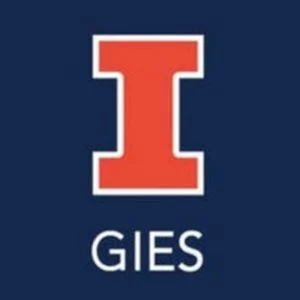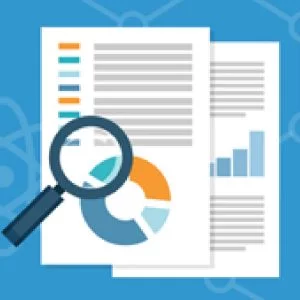
In the information age, data is all around us. Within this data are answers to compelling questions across many societal domains (politics, business, science, etc.). But if you had access to a large dataset, would you be able to find the answers you seek? This course, part of the Data Science MicroMasters program, will introduce you to a collection of powerful, open–source, tools needed to analyze data and to conduct data science. Specifically, you’ll learn how to use: python jupyter notebooks pandas numpy matplotlib git and many other tools. You will learn these tools all within the context of solving compelling data science problems. After completing this course, you’ll be able to find answers within large datasets by using python tools to import data, explore it, analyze it, learn from it, visualize it, and ultimately generate easily sharable reports. By learning these skills, you’ll also become a member of a world–wide community which seeks to build data science tools, explore public datasets, and discuss evidence–based findings. Last but not least, this course will provide you with the foundation you need to succeed in later courses in the Data Science MicroMasters program.
Instructor Details
Courses : 6
Specification: Python for Data Science
|
29 reviews for Python for Data Science
Add a review Cancel reply
This site uses Akismet to reduce spam. Learn how your comment data is processed.

| Price | Free |
|---|---|
| Provider | |
| Duration | 90 hours |
| Year | 2020 |
| Level | Expert |
| Language | English |
| Certificate | Yes |
| Quizzes | No |

FREE






Anonymous –
One of the better Python DataScience course out there. Good overview of how various tools are used in the Data Science process.
Ashlynn Pai –
This course gave clear instructions on how to get started in making data science projects with Python and Jupyter Notebooks. Unlike some other courses, the walkthroughs were prepared as Jupyter Notebooks which saved me from having to stop the videos every two seconds to type out notes. Following the instructions made it easy to prepare the two projects.
Ronny De Winter –
Practical introductory course for data science using python and its major data science libraries (numpy, pandas, matplotlib, …). The use of jupyter notebooks encourages to dive into it and explore in further detail.
The course has good references to and makes good use of open data available on the internet, both for the lecture examples and the assignments. The projects are relevant and useful.
Anonymous –
Overall a pretty good course and intro to data science using Python. How much you learn from this course is pretty much what you put into it. The grades are very easy to earn and earning a high grade doesn’t necessarily mean that you learned a lot. The best thing about the course are the jupyter notebook notes and exercises. They are very detailed and you learn by example. One thing I wish the instructors did was actually grade the projects instead of leaving it to peer review. Peer review is arbitrary and most of the time my peers did not really understand my project mostly because I used statistics which is out of the scope of the course, but I put extra time into figuring stuff out and wish that I could receive better feedback on that aspect. It would have been really valuable if someone could have provided feedback because there was one hurdle I could not move pass despite researching the topic a lot. In my final project one of my peers took marks off just because I didn’t have a plot for one of my research questions that specifically asked for parameters that could predict the response well which doesn’t need a plot. Meanwhile, I spent my time going through other people’s projects and giving feedback whenever applicable. A project in particular I looked at was 400 pages long, 398 pages of it was a long error message. There is also no penalty for giving someone a bad peer review or bonus for giving a good peer review to someone else, so really peer review is a waste of time and most of the time doesn’t benefit either side.
Each week of the course takes roughly a few hours to complete. I personally completed the entire course in about 70 hours. 25 30 of those hours working on the mini project and final project, 6 hours on peer review for both projects.
Dave Guenther –
This was my first time taking an online course as if it were a college class. The content is excellent, and the instructors are also excellent. One of them speaks a little fast, but all video lectures come with subtitles. I didn’t rate this 5 stars because there was at least one time where I asked a forum question to the course staff, which was also echoed by another classmate regarding potential erratum in the machine learning section that wasn’t major, but had me wondering if I had misunderstood some concepts of parallel plots but the edx staff never responded to the question.
Though I spent way more time on this course per week compared to what the course suggests (10 hours/week), I spent most of my time filling up a spiral notebook with notes on concepts, syntax, and other aspects of Python and Data Science to help commit it to memory and to retain as reference for after the course. Additionally I spent much longer on the mid term and final projects for the course, not because the course didn’t prepare me for them but because I chose hard problems to solve so I could get stuck and figure out the solution.
While I have some programming knowledge, I had never used Python before taking this course. I use it every day now in my current job and it has become my go to tool to solve any data related questions or problems. I would highly recommend this class to anyone interested in learning Python or learning how to think about or process data sets.
Varun Sharma –
Hi I audited the course and this is definetely one of the good courses for getting intro to data science with python . Since iam a working professional i didnt had enough time after office completion 6.30 pm , to complete it on daily basis but i sticked to atleast 3 hrs daily .
At multiple places instructor used different ways to do the same task which is good for exposure but confusing for naive learners.
There were few concepts that cud hv been explained more easily.
My advice to the team wud be to explain via a small data set which learners cud visualize and get an idea of and then elaborate concepts on the actual data sets used.
I started with this course around mid october 2017 . I also referred other short you tube videos parallely to reinforce better understanding .thats why i am still in last week of the course in jan 2018 .
But all and all course helped me enabled with the jupyter python broadly and github , conda to some extent .
Vikram Aditya –
It’s a great course. I learnt a lot though I had prior Python knowledge. Instructors are great. You are also rewarded for course engagement in addition to assignments. As an audit learner I scored 70% on the course spending 1 2 hours per week. If your profession is in the area of Data Science or you intend to pursue a career in that area, this course is helpful to build a strong foundation.
Elie Gakuba –
One of the best course on Python for data science. the instructors chose carefully the minimum necessary to help you through your own way to data science. I could give 5 but since I was auditing I may have missed the quality of assignments. Take this course if you are new to python for data science and you will not regret your time.
James Peter –
It is good course and provides newer approach and helps to learn few skills which are not included in other tutorials. But few topics required more content to help gain complete understanding. Overall the course is good and would recommend anyone wanting to pursue python for Data Science.
Magpiem –
Great class! Key python skills + tons of well organized information for data science. And the peer review of the projects is the most exciting part. This is a really useful class. Totally worth it!
Vinrok Chitrakathi –
This course is really amazing and even Data Science beginner will feel like heading towards sky after going through this course. Thanks professors for your guidance and teaching.
Bob Steenrod –
Great course. It was a good balance between data science principals and python instruction. They also gave some references for material to dig in deeper with. Nicely done!
Fawad Arshad –
The course was very informative and I learnt a lot. The projects we did made us learn by doing and that was really good experience.
Anonymous –
This was a worthwhile course. I enjoyed it. It was challenging, but not exhausting.
The Python section could have been longer more thorough. I had hoped that the course was more about learning Python, as well as learning about Data Science. Fortunately, this was not my first course in Python.
Peer review of the mini project was a disappointment. I had taken the task seriously. I reviewed more than the minimum required presentations and I took care to leave comments explaining the scores I had given. The two students who reviewed my work gave less than perfect scores with no notes as to how they reached their scoring conclusion.
Review of the final project was more constructive and I appreciated the reviewers time and effort in explaining their scores.
Simon Hawkins –
Great overview of the data science process and great introduction to Python tools such as Pandas and Matplotlib. I am now using these tools on a daily basis. Also an quick introduction to machine learning and looking forward to the subsequent course on machine learning in depth.
Daniel Quiroz –
Valuable content and learning methodology of doing. Of course you must put extra hours to get the best from this course, but is a very good introductory approach to Data Science, using Python. Thumbs up!.
Anonymous –
This course is a perfect mix of coding and lectures to kick you off to a perfect start in the field of data science. After having this course, I decided to take up the MicroMasters program offered by UCSD in this area and am currently in my second course. I would recommend this without any reservations to anyone who is looking to delve into the beautiful field of data science. I myself am a mechanical engineer and had no idea about CS. This course however doesn’t need any pre requisites in CS to do well. I had a great time completing it!
Ciro Emmanuel –
A good introductory course to the subject. Many available tools are presented to the student, and also the students are encouraged to investigate much more on their own.
Several aspects of Data Science are well presented and supported with practical cases.
Assignments and quizes are relatively easily to complete, but the programming assignments have enough depth for the student to learn a lot more from them, if one is interested enough in the subject and spares no effort or time in completing the assignments.
Qaqambile –
its a great cause,the teachers are both very good. i am new in programming but at least i could understand. however i was not able to download the videos from my PC, i could not see the button or option to download videos. this second time around please, the button for downloads must be visible. i was able to download from my phone. But from my PC i am not able.
Harald Von Fellenberg –
I have done other Python MOOCs before, so most topics were not new to me. However, I liked the pervasive use of Jupyter Notebooks, since so far I always was a command line hacker, and Jupyter is the first IDE that I like.
The course has helped me to understand how to use Pandas Dataframes, and after the course I have continued to study the effects of global warming, using one of the datasets in kaggle. Overall, one of the best courses I have completed so far.
Anonymous –
Excellent course to get in touch with Python and Jupyter notebooks for data science. Great tool for sharing data analysis and powerful material to get done fast and useful data analysis including the basics regarding graphics for information presentation.
Anonymous –
An extremely good introduction to jupyter notebooks, pandas, numpy and others. I now use these tools most days. Don’t expect to be a master by the end, but this course gives you the necessary tools and knowledge to keep on learning; the keys to the door of the library if you will. The projects are interesting esp. the final one. I would definitely recommend to anyone interested in data science and python. I hope to continue with the other courses in this series!
Anonymous –
Audited the course and really liked it. Useful lectures were easy to follow and not too long. The python notebooks were excellent starting points to play around with the different data processing and machine learning techniques. Highly recommend.
Anonymous –
I audided this course and did all the exercises but not the mid term and the final project.
This course is a very good introduction to jupyter notebooks, pandas, numpy, matplotlib etc.
It is a practical oriented introduction into Python for Data science and contains also interesting references to the open data available on the internet.
This course gives you a strong foundation for data science a highly recommendable course with very good teachers.
Anonymous –
A good overall intro to Data Science. Each week you learn something new and build upon skills gained in previous weeks. The jupyter notebooks are great and I reference them even after completing the course. Really enjoyed the instructors as well. The later weeks do throw a lot of material at you (machine learning, natural language processing, databases) but don’t dive into it deeply. I know it is an intro class but these weeks left me wondering what I had just learned and why. If you are new to the subject, I would recommend taking this course and reading all extra material suggested in the course to get the most out of it. Cheers
Anonymous –
This course is absolutely terrible.
99% of the UNIX coding used in these Jupyter notebooks will not execute on a Windows system. The instructors briefly address that there could be issues for windows users going forward, but don’t address how to fix these issues or provide work around solutions to follow along in the lecture.
The result is I end up wasting tons of time at the start of each lecture, after downloading example files, to devise ‘work arounds’ so that I can follow along on my windows system.
I am just auditing the course but the discussion boards are full of 9month+ old msgs from certified learners, who paid to take this course, complaining about these issues and in awe of the fact that the instructors/TAs are nowhere to be found, make no attempt to help windows users, etc.
An interesting, learn by doing approach… and course seems to use current packages, versions etc. which is why I give this 2 stars rather than 1. I will continue for a short time longer, in hopes that I might learn something from this course, but I expect I may quit soon.
Kelvin Yu –
i really liked the course. i felt that the material was able to impart to me fundamental knowledge about data science for someone with 0 background on the topic. brush up on your python skills before starting the course, but i’m no expert either and i had a learn as you go mentality. it really is a must that the student should explore outside the given course material and learn to tinker and tweak with the notebooks given to truly learn more
Luiz Cunha –
Overall some (very) good points, and some (very) bad points; that’s why at the end I could only give an average mark of 3 for this course.
On the very good side:
the notebooks: they are of quite good quality. You can learn by example from them. They give you concise efficient learning value by practical example illustration
On the good side:
the Unix part: I did learn more than a few usefull tips there
the Numpy part: maybe the best concise overview, and most convincing arguments to use Numpy I ever had
On the bad side:
the video presentations from the lady Professor are rather weak and not engaging. She is not clear in her explanation, not to say often confused.
On the very bad side:
no real exercises, assignment or tests except the peer review projects (the test questions are mainly a joke): this is a huge minus for this MOOC. The Professors could/should have spent much more effort building real exercises as application of the course content. They went for the quick and easy way to provide (good) already made notebooks and just explain them. And for exercise, they delegated the workload to external by choosing Peer Review projects for assignments.
I had just completed the R Data Science Specialization from HarvardX before this Course. In contrast, I effectively learnt much more from the HarvardX course due to the much better quality of the exercises and assignments there.
So all in all, this MOOC is ok for the notebook resource. But you likely won’t learn much more else. Definitely not worth to pay 350USD to get a Certificate
Galih Aaad –
it was very approachable for those who just started to learn Data Science specifically using python. I could comprehend the fundamental easily by the explanation and series of simple examples and implementations.